Botswana’s indigenous plants amplify its appeal as a sought-after safari destination. Eco-travellers and conservation enthusiasts can delight in spotting the sausage tree, the Delta’s version of the fig tree, and the Mowana baobab as arid sandscapes seamlessly transition into rolling grasslands, wooded valleys, and shimmering saltpans.
Let’s dig into five unique flora you’ll likely see when visiting Botswana on a safari – essentially just the tip of Africa’s many experiences and natural wonders.
1. Sausage Tree (Kigelia Africana)
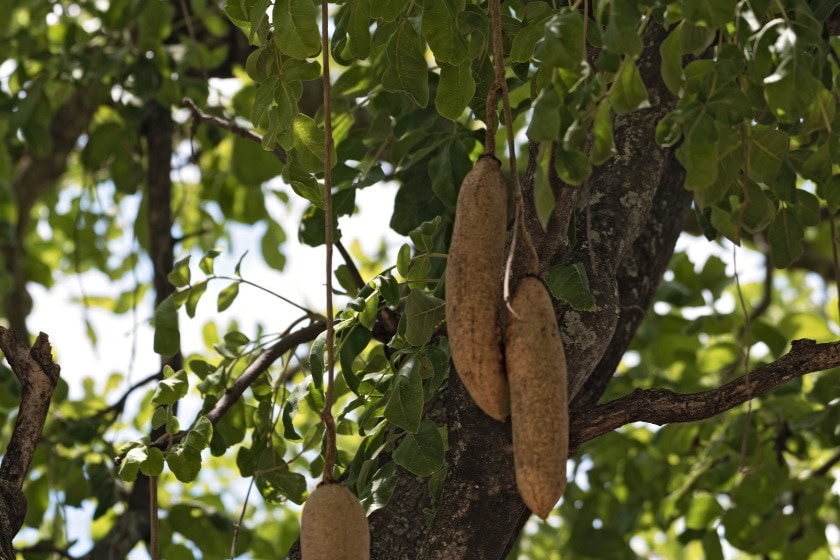
The sausage tree is one of the most recognisable trees in Botswana. It grows to about 28 meters (65 feet) and bears long sausage-shaped fruit, hence its name. Its leaves, flowers, and fruit are eaten by many animals. Giraffes can easily reach high-altitude ‘sausages’ weighing more than 4 kg (9 to 10 pounds) each.
The dark-red, cup-shaped flowers of the sausage tree are usually pollinated by birds, bats, and bush babies. Sausage trees also occur in Tanzania, South Africa, Zimbabwe, Mozambique, Malawi, and Zambia, where a beautiful river lodge on the Zambezi River is named after it. The fruit and bark of the sausage tree are associated with antibacterial, anti-fungal, and anti-inflammatory properties and have been used in traditional medicine remedies and organic skincare products.
2. Sycamore Fig (Ficus Sycomorus)
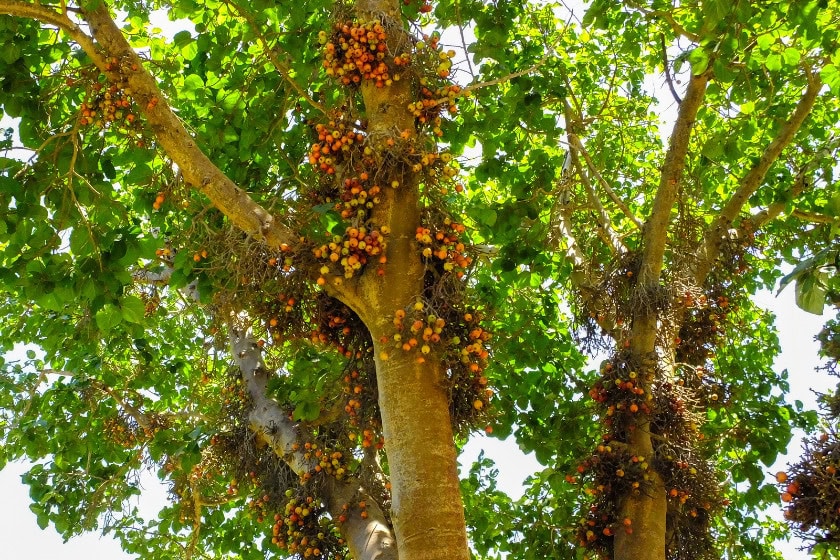
The Sycamore fig is known as the mochaba tree in Botswana, one of 900 species globally. The mochaba grows in large numbers in the Okavango Delta and the Tuli Block. This semi-deciduous tree can reach up to 35 metres (114 feet).
One of the Okavango Delta’s top lodges, the five-Star Wilderness Jacana, shelters in the shade of these magnificent trees. The tree’s unique pollination relies on a fig wasp species, and its figs serve as a crucial food source for a diverse range of wildlife in Botswana, including birds, bats, and various mammals. The wood from this local tree is valued for traditional crafts and construction and further highlights the Sycamore fig’s ecological importance in Botswana.
3. Sweet Thorn (Vachellia Karroo)
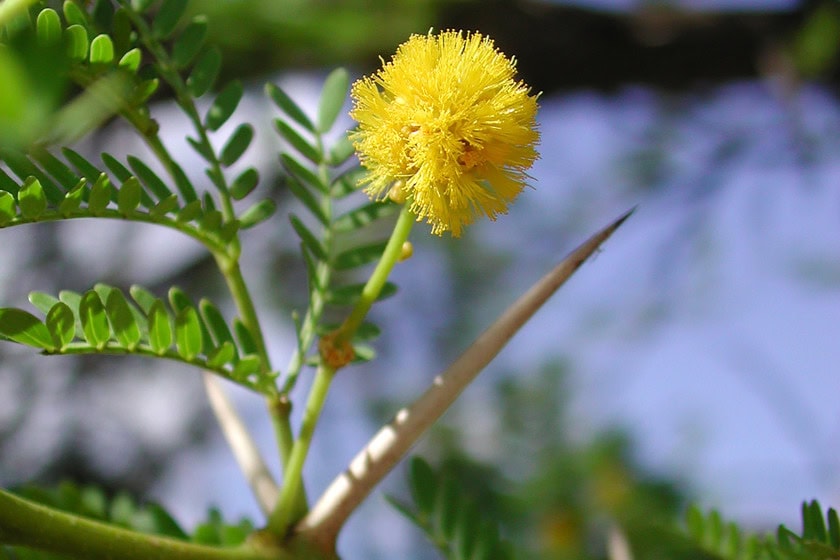
The sweet thorn tree is a well-known species of acacia tree that occurs widely throughout southern Africa. In Botswana, it’s called the mooka tree. Other names for it include umuNga, soetdoring, and mookana. The sweet thorn tree usually grows to about 12 metres (39 feet) tall. Seen as a ‘pioneer plant’, it often grows where there is groundwater.
It is one of the region’s most beautiful trees, with its sweet-smelling, fluffy yellow flowers blooming amidst its white thorns (or spines) at the beginning of summer in Botswana. The tree is often used for firewood, as material for rafts, and thorny fencing. The spines have also been repurposed as sewing needles. Its sweet gum, which leaks where the bark has been damaged, is eaten by humans and many animal species, including bush babies.
4. Mowana Baobab (Adansonia Digitata)
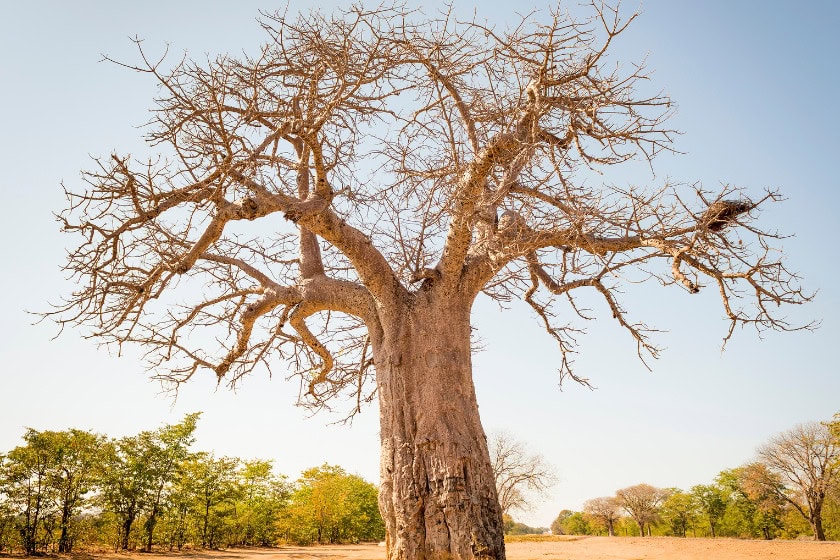
The baobab, called the mowana baobab in Botswana, is also the world’s largest succulent. Known for their massive trunks and long lifespans, some baobabs are believed to be over a thousand years old. Baobabs are predominantly found in rocky woodlands with low rainfall across dry, hot areas in Botswana, Namibia, South Africa, and Mozambique.
Many legends, stories, and beliefs are attached to this ‘upside-down’ tree of southern Africa, often called the ‘Tree of Life’. Some magnificent specimens in Botswana include the Chapman’s and Green’s baobabs in Ntwetwe Pan and the Baines baobabs in the Nxai Pans National Park.
The baobab bears large, sweet-smelling flowers pollinated by fruit bats at night. Its fruit, known as ‘monkey bread,’ is rich in nutrients, Vitamin C, and calcium. Bees often hive in the trunks, and leopards, genets, and various nesting birds also utilize the trees. Though baobabs don’t often exceed 25 metres (82 feet) in height, their squat trunks are massive. A baobab’s circumference in South Africa’s Limpopo province has already reached 33 metres.
5. Wool Grass (Anthephora Pubescens)
Wool grass is good at surviving fires, giving it a key role in the regenerative processes of the savannah grasslands across Botswana. The roots of wool grass can also take in low-nutrient soils and help avoid soil erosion. It can grow up to 1.5 metres (5 feet) in height and is a vital food source for both domestic and wild grazing animals. Its practical value also creatively showcases traditional thatching roofs and making mats.
As safari experts, we at Discover Africa have partnered with lodges and guides who are deeply passionate about the scientific and cultural significance of Botswana’s fauna and flora. Experience Africa’s wildlife in their natural habitats as we tailor your next safari tour to Botswana, bringing the sights, sounds, and smells to life. Not sure when to go? Start with this safari planning calendar, or use this safari cost estimator to calculate your budget before you go.









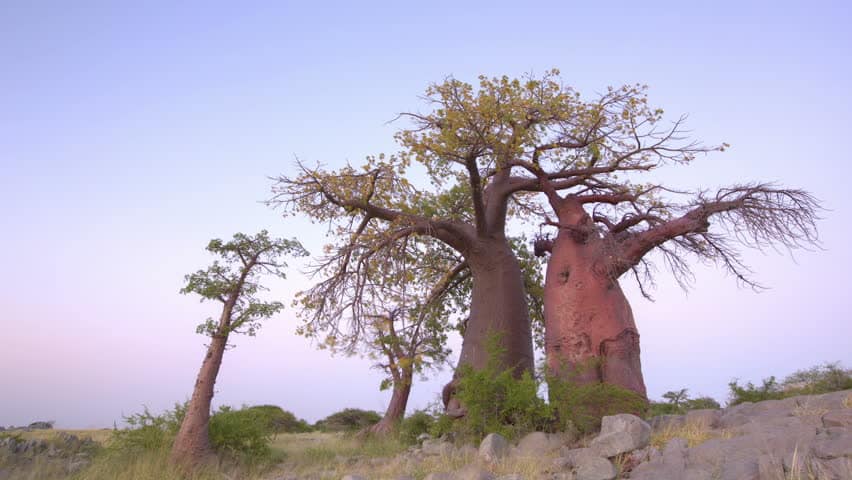
 Blog List
Blog List

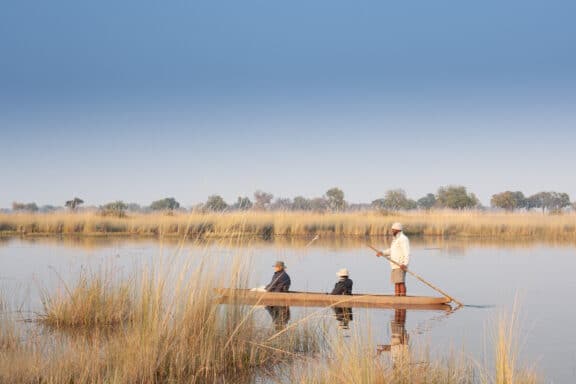
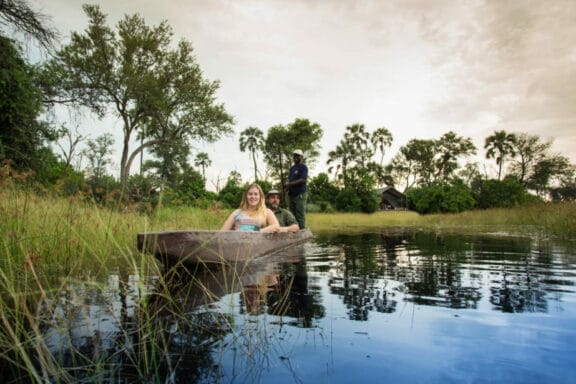
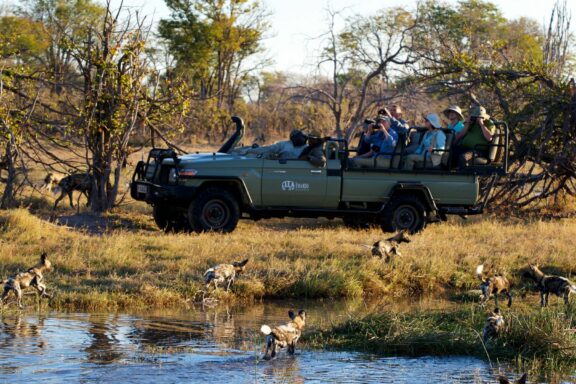
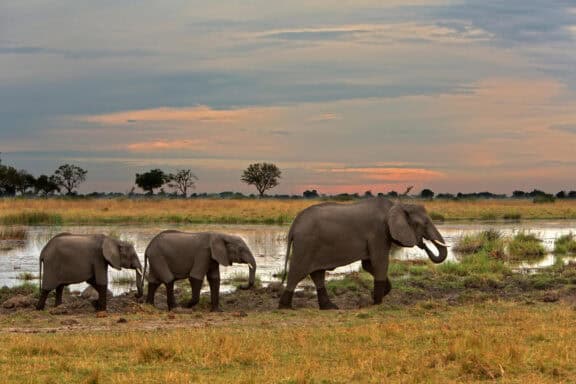

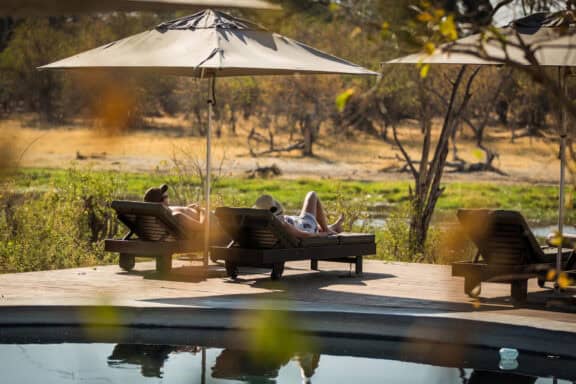
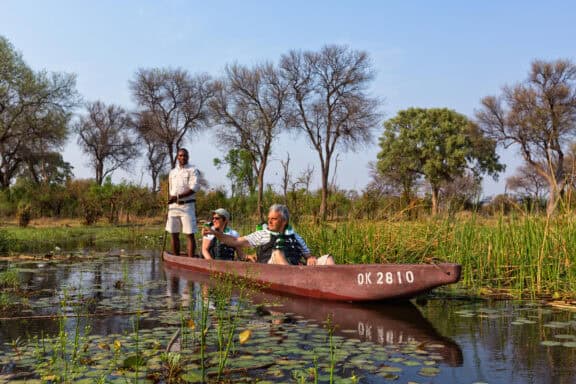
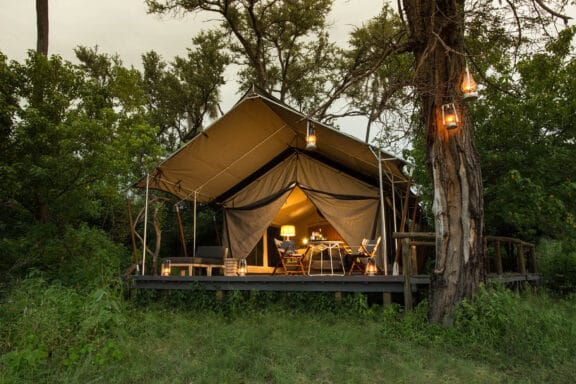
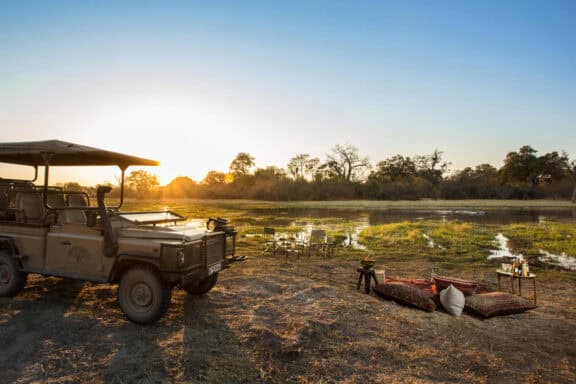

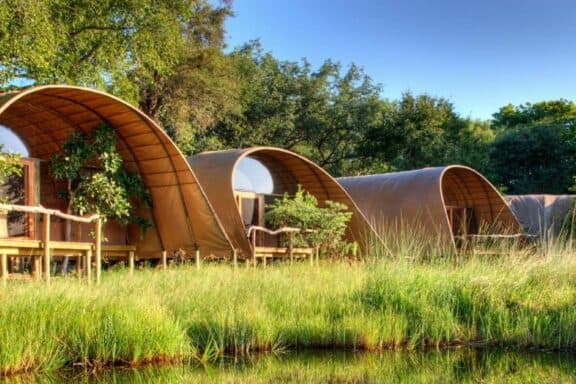
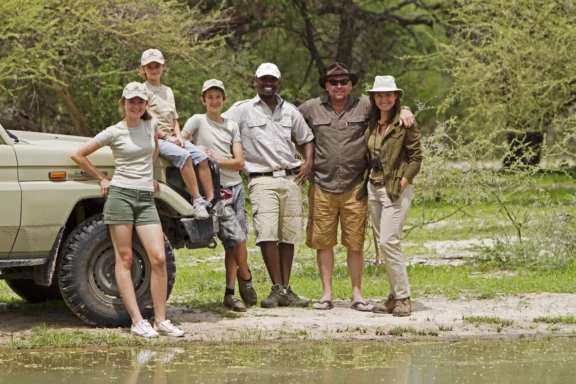
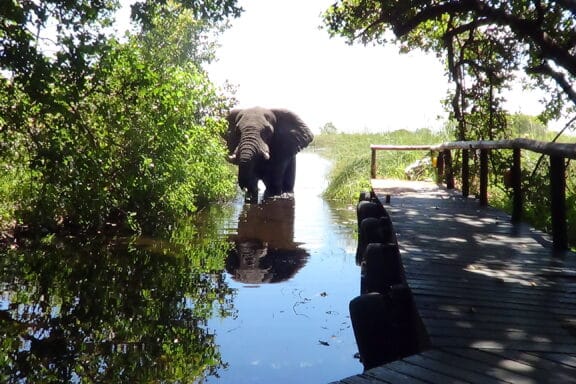
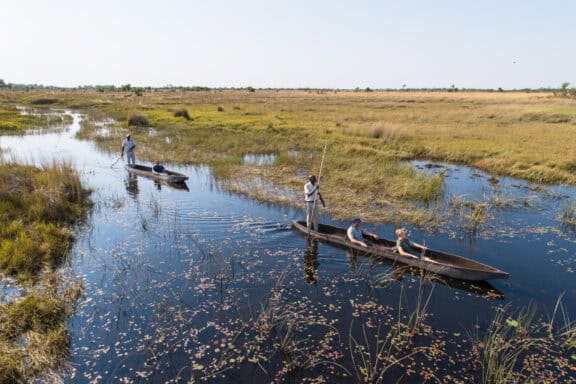
 13 Jan 2025
13 Jan 2025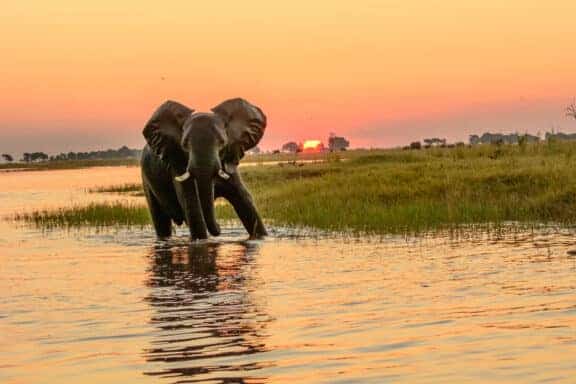
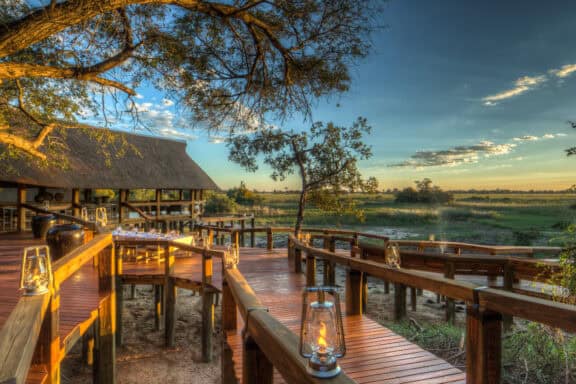








Written by Brendan White
• Travel Writer
Part of the Botswana Safari Collection